How to free climb El Capitan...
- Published
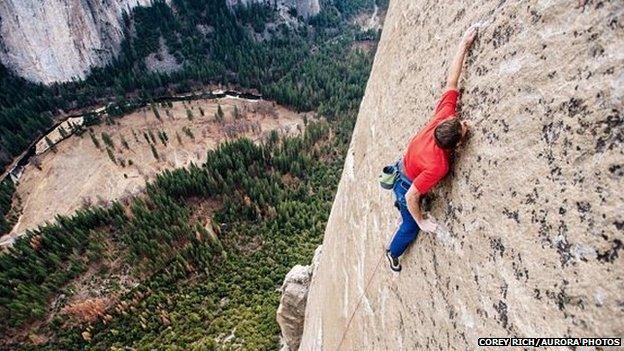
No-one has ever managed it before, but two men have free climbed the Dawn Wall of California's El Capitan rock formation.
Just look at it, it's terrifying.
It took Kevin Jorgeson and Tommy Caldwell more than two weeks to reach the 3,000ft (914m) summit at Yosemite National Park.
The sheer granite cliff face is one of the most difficult climbs in the world and frighteningly smooth.
(If you can't imagine it, it's three times as tall as the Shard in London, the EU's tallest building).
Only the most mentally and physically strong climbers could even contemplate such a challenge - but here are some of the qualities you might need, just in case you think you're up for it...
...Super strong fingers
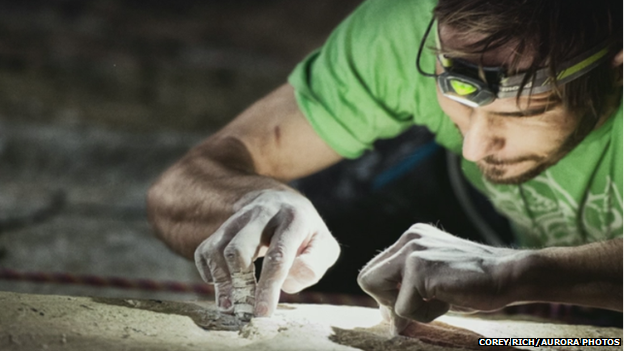
Free climbers don't use cables or chisels to carve out grips. Instead they climb inch-by-inch clinging on to tiny cracks or lumps of rock.
So imagine trying to lift all your body weight up onto a window ledge.
Now imagine that window ledge is only as big as a matchstick. Impossible huh?
That's about the size of the holes these guys have been clinging on to for the last 19 days, so tough fingers are a must.
...A high pain threshold
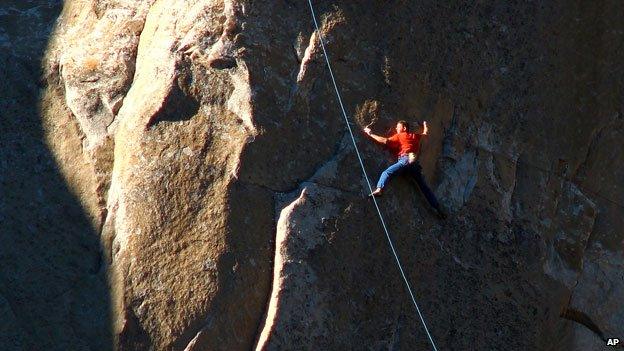
Hanging all that body weight off your fingertips is not only unimaginably difficult, it's also rather painful.
Only a week into their challenge, both men had hardly any skin left on their fingertips, which were shredded by razor sharp edges.
They took several days off to help the skin heal, using tape and superglue to try speeding it up.
Tommy even set an alarm to wake him every couple of hours to put a special lotion on his throbbing hands.
The men were also left bruised after slipping and bouncing off the mountain face.
Ouch!
...No inhibitions about "private business"
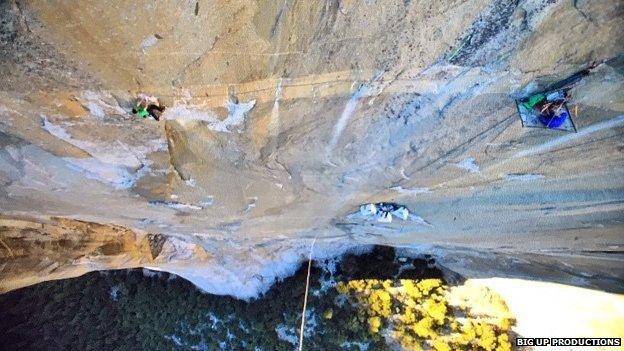
Onto an essential question. How do you go to the toilet hundreds of metres up a sheer cliff face?
The answer is quite easy.
The pair watched their urine evaporate into thin, dry air and used hygienic, biodegradable toilet sacks for their other business, giving the bags to helpers to get rid of.
Now that's loyalty.
...Plenty of food and rest
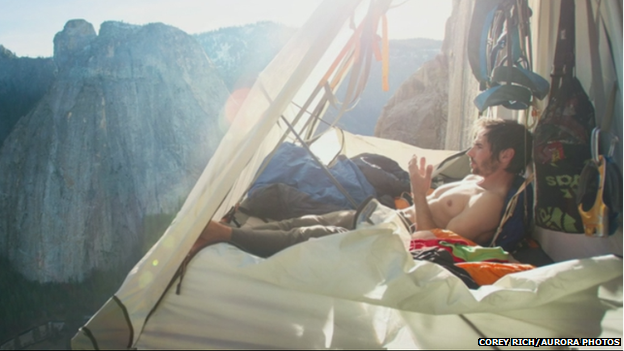
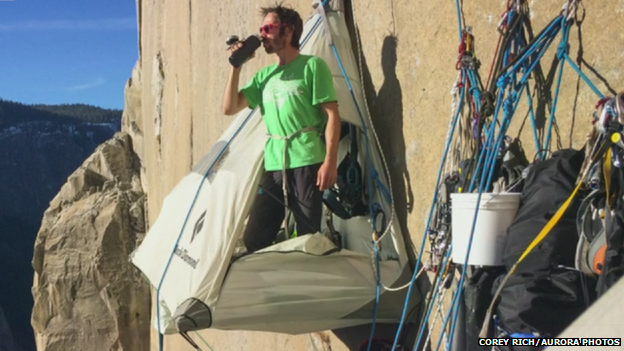
It goes without saying that spending 19 days on one of the most physically intense challenges of all time, will require a fair bit of sleep, food and drink.
Tommy and Kevin had a team of supporters with them carrying supplies and equipment.
The pair ate and drank anything from cream cheese and avocado bagels, to canned peaches and occasionally whiskey.
They really needed a strong stomach for the sleeping arrangements.
With tents hung from the cliff face and the men harnessed in, you'd still hope it didn't get too windy overnight wouldn't you?
...An "up all night" attitude

Cool conditions are best for this sort of climbing. It means hands sweat less and it gives more grip between rubber shoes and the granite.
So because it's still fairly warm in California at this time of year, the men often climbed at night when the temperatures dropped - as if their sleep routines weren't already challenging enough.
...Patience

It took 19 days to reach the top, but it also took more than five years of intensive training.
After facing a particularly tough section of El Capitan, Kevin posted on Instagram: "On my 4th attempt, the razor sharp holds ripped both the tape and the skin right off my fingers.
"As disappointing as this is, I'm learning new levels of patience, perseverance and desire. I'm not giving up."
That is why we salute Tommy Caldwell and Kevin Jorgeson.
And if after all that, you think you've got what it takes to do something similar one day... here are more tips on getting into climbing.
Follow @BBCNewsbeat , externalon Twitter, BBCNewsbeat, external on Instagram and Radio1Newsbeat, external on YouTube